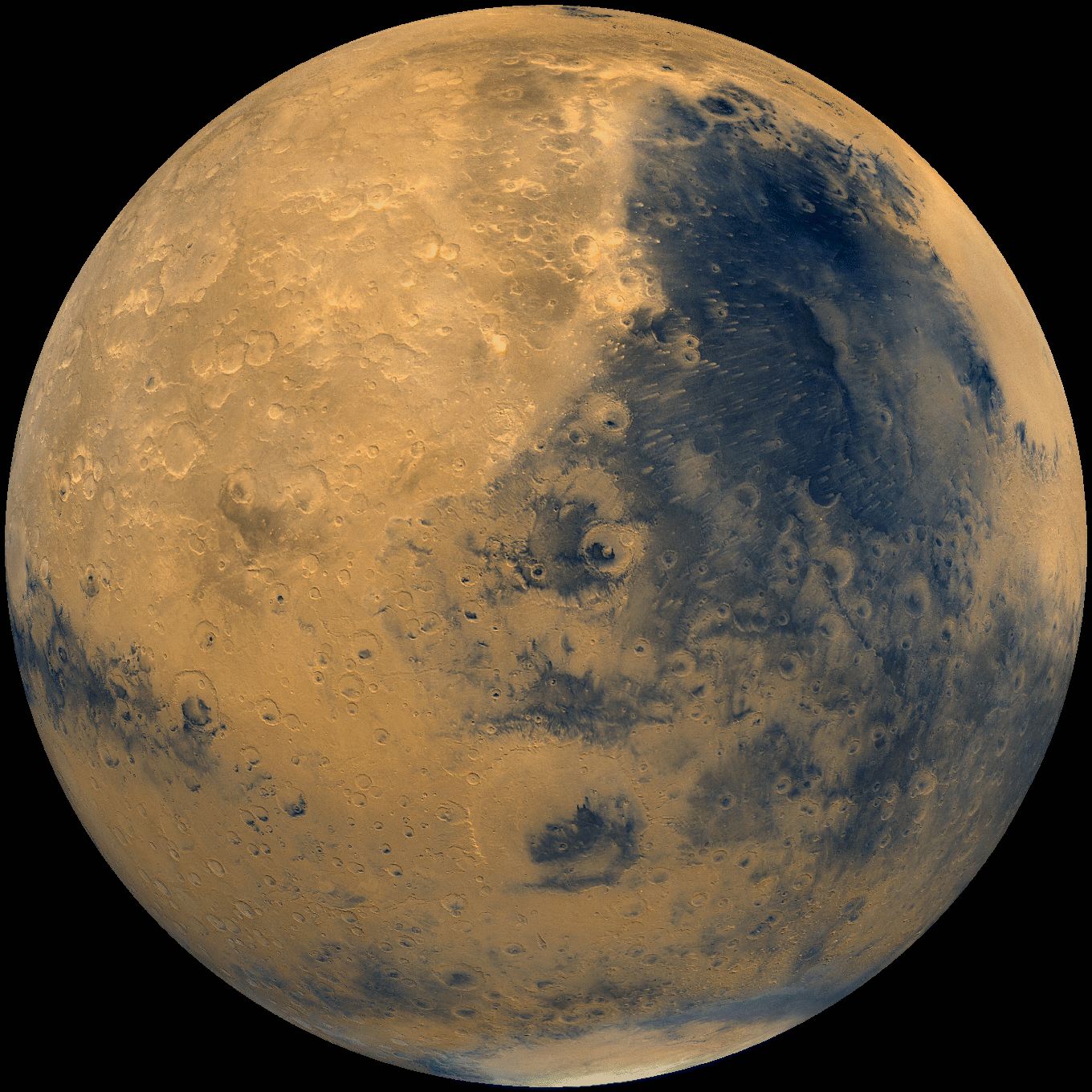Space Probe Fleet Idea Would Search for Mars Life

A newly proposed Mars mission would search for signs of Red Planet life on the cheap using a half dozen robotic probes.
The Biological Oxidant and Life Detection mission, or BOLD, would send six small spacecraft to Mars to seek out extinct or extant life in the planet's red dirt. The mission — if it's ever approved — might be ready to go by 2018 and would likely cost less than $300 million, researchers say.
If BOLD gets off the ground, it would be the first dedicated life-detection mission to Mars since NASA's twin Viking landers blasted off in 1975, ultimately returning inconclusive results.
"After Viking, it has been quite a long time now," said BOLD proposal leader Dirk Schulze-Makuch of Washington State University. "We have so much more information about Mars, about the environment, and our technology has further developed — we have such better instruments — that it's really now time to try to get straight to the answer." [5 Bold Claims of Alien Life]
Six soil penetrators
BOLD would employ six identical "penetrator" probes, 130-pound (60-kilogram) pyramid-shaped spacecraft that would punch into the Martian dirt pointy-end first at six different spots around the planet. The landing locations would be determined later, if the mission gets off the drawing board.
Schulze-Makuch and his colleagues don't expect all six spacecraft to survive the parachute-slowed impact intact; the redundancy is a way to hedge their bets.
Breaking space news, the latest updates on rocket launches, skywatching events and more!
"If four penetrators slam in and give us good results, we'd be happy with that," Schulze-Makuch told SPACE.com.
The probes would reach 4 to 8 inches (10 to 20 centimeters) into the soil — deep enough to access potentially life-friendly environments, Schulze-Makuch said. (Many researchers think the high radiation levels on Mars' frigid surface would be tough for life as we know it to endure.)
Each penetrator would conduct a half dozen experiments with the subsurface dirt. One instrument, for example, would search for long, complex molecules similar to nucleic acids such as DNA. Another would attempt to stain living Martian cells with flourescent dyes.
The penetrators would also perform a repeat of Viking's famous "labeled release" experiment, which provided "food" to possible Martian microbes and looked for gaseous signs of metabolic use. Some of the results of this experiment were positive, but many researchers say that abiotic chemical processes were probably responsible.
BOLD's spacecraft would add a twist to labeled release: they would provide microbe food in "right-handed" and "left-handed" forms. On Earth, bacteria have a clear preference for right-handed isomers, so preferential use of one of the forms on Mars could be suggestive of life. If both isomers are snapped up equally, abiotic chemical reactions would be indicated, researchers said.
Natural antifreeze?
The penetrators would also measure soil pH, inorganic ions and other characteristics that could help identify the dirt's concentration of hydrogen peroxide. If Mars microbes exist, they could be using a water-hydrogen peroxide solution as their internal solvent, Schulze-Makuch said.
"A hydrogen peroxide-water mixture would be a great antifreeze, staying liquid down to minus 50 degrees [Celsius]," he said. "If you are in the Mars desert, that would be a really great thing — to be an extremophile and have this kind of adaptation."
The six probes would also carry a microscopic imager to look for cells and tiny fossils.
"If you want to look for life, you want to have a microscope," Schulze-Makuch said. "Let's face it — people won't accept the proof of life until they see bactera in a microscope, and the bacteria's kind of waving back, or at least wiggling."
The researchers presented the BOLD proposal in March, in a study published in the journal Planetary and Space Science.
Mars life search on the cheap
Schulze-Makuch estimates that BOLD could be mounted for $300 million or less, with an earliest possible launch date of 2018.
It's all still quite speculative, since BOLD at the moment is just a proposal, not a funded mission. However, Schulze-Makuch thinks BOLD is the type of mission that NASA should be interested in, especially after budget cuts recently forced the agency to scale back its Mars exploration program.
"I do think actually that NASA would be, exactly right now, very interested," Schulze-Makuch said, noting that the agency has been tasked with getting people to the Mars vicinity by 2035 or so. "Before we send a human mission to Mars, we really want to know, as well as we can, whether there is microbial life on Mars."
Many scientists regard a Mars sample-return mission as the best way to look for life on the Red Planet, but such an effort would likely cost several billion dollars at the minimum.
"This kind of approach," Schulze-Makuch said of BOLD, "would be much cheaper."
You can follow SPACE.com senior writer Mike Wall on Twitter: @michaeldwall. Follow SPACE.com for the latest in space science and exploration news on Twitter @Spacedotcom and on Facebook.

Michael Wall is a Senior Space Writer with Space.com and joined the team in 2010. He primarily covers exoplanets, spaceflight and military space, but has been known to dabble in the space art beat. His book about the search for alien life, "Out There," was published on Nov. 13, 2018. Before becoming a science writer, Michael worked as a herpetologist and wildlife biologist. He has a Ph.D. in evolutionary biology from the University of Sydney, Australia, a bachelor's degree from the University of Arizona, and a graduate certificate in science writing from the University of California, Santa Cruz. To find out what his latest project is, you can follow Michael on Twitter.

